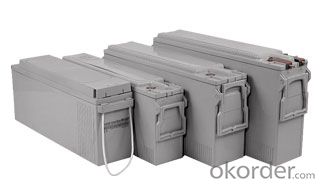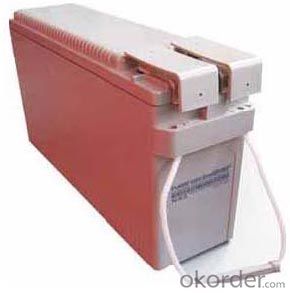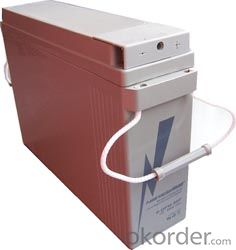Loading Port:Shanghai
Payment Terms:TT OR LC
Min Order Qty:1000 unit
Supply Capability:500000 unit/month
The MP range VRLA batteries is designed with front terminal structure. The perfect design ensures MP series battery the high reliability and makes the installation quite simple and safe when placed on a standard relay rack tray or in a closed cabinet.
MP range VRLA battery is designed with high energy density and suitable for 19", 23" rack or cabinet, and also offers options of top connection and side of monoblocs connection.
MP range battery can be equipped with central gas collection system according to the requirement of customer.
The MP batteries are ensured the quality with NARADA's QA system according to the ISO9001 standard.



AGM technology applied in MP range batteries.
Front-access terminal connections for fast and easy installation and maintenance
Suitable for 19", 23" rack or cabinet
Excellent special lead-tin-calcium formula alloy for Grids and plates
Mircoporous glass mats in low resistance as separator
Self-regulating pressure relief valve
12+ years expectant Life under full float service at 25oC(77oF)
Type: | 6-GFM-105F | |
Voltage: | 12V | |
Nominal Capacity: | 100Ah(C10) | 100Ah(10 hours rate:) |
Length: | 511mm | |
Width: | 110mm | |
Height: | 238mm | |
Height with termial: | 238mm | |
Weight: | 34Kg |
IEC60896-21/22
BS6290 part 4
Telcordia SR4228
Eurobatt guide
UL
Manufactured under system ISO9001(TUV)
EN 50272-2 or local equivalents
Telecommunications
Uninterruptible power supply (UPS)
Switchgear / utility
Other applications to provide integrated stored energy system
Recommended float charge voltage for 12V battery:
2.25Vpc at 25oC(77oF)
Self discharge rate:< 2% per month at 25oC(77oF)
Shelf life: 6 six months at 25oC(77oF)
Valve regulated system, no water addition needed.
![]() What is sulfation of batteries?
What is sulfation of batteries?
Sulfation is the formation or deposit of lead sulfate on the surface and in the pores of the active material of the batteries' lead plates. If the sulfation becomes excessive and forms large crystals on the plates, the battery will not operate efficiently and may not work at all. Common causes of battery sulfation are standing a long time in a discharged condition, operating at excessive temperatures, and prolonged under or over charging.
![]() How long a battery can last?
How long a battery can last?
The service design life of a battery are vary considerably with how it is used, how it is maintained and charged, temperature, and other factors.
![]() Do batteries self-discharge when not in use?
Do batteries self-discharge when not in use?
All batteries, regardless of their chemistry, self-discharge. The rate of self-discharge depends both on the type of battery and the storage temperature the batteries are exposed to. However, for a good estimate, Narada batteries self-discharge approximately 4% per week at 80ĄăF.
![]() How can I evaluate the health and charge state of a battery?
How can I evaluate the health and charge state of a battery?
Routine battery examinations divulge irregularities in the charging system as well as in the batteries. The principle method is to examine the electrochemistry of the battery through hydrometric electrolyte inspection. As previously discussed, this important examination cannot be accomplished with sealed absorption or gel batteries. Voltage readings alone require experience to interpret. Hydrometric readings will uncover early warnings of overcharging or overdischarging before batteries are damaged. The state-of-charge and reliability of a lead acid battery can best be determined by the specific gravity of the electrolyte measured directly with a common bulb-type hydrometer with a glass float. We do not recommend the ball float type hydrometer. Specific gravity is a unit of measurement for determining the sulfuric acid content of the electrolyte. The recommended fully charged specific gravity of marine batteries is 1.255 to 1.265 taken at 80ĄăC More than .025 spread in readings between fully charged cells indicates that the battery may need an equalization charge. If this condition persists, the cell is failing and the battery should be replaced. Since water has a value of 1.000, electrolyte with a specific gravity of 1.260 means it is 1.260 times heavier than pure water while pure concentrated sulfuric acid has a specific gravity of 1.835.